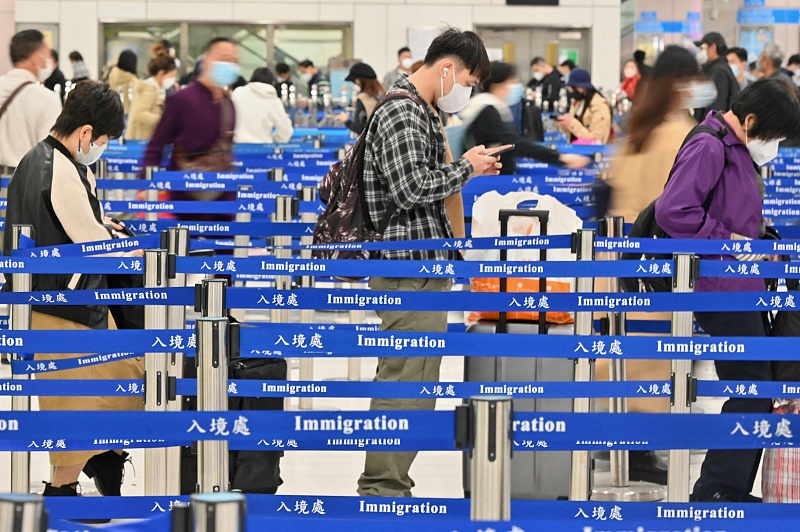
Travelers queue up at the Lok Ma Chau checkpoint at the Shenzhen border crossing with the Chinese mainland, in south China's Hong Kong, January 8, 2023. /CFP
Travelers queue up at the Lok Ma Chau checkpoint at the Shenzhen border crossing with the Chinese mainland, in south China's Hong Kong, January 8, 2023. /CFP
Cross-boundary students were able to return to south China's Hong Kong Special Administrative Region (HKSAR) to resume face-to-face classes in phases starting Wednesday, with secondary school students being the first group to come back.
The next phase will start on February 22, involving students from primary schools, kindergartens, and special schools, according to the Education Bureau of the HKSAR government.
As normal travel between Hong Kong and the Chinese mainland fully resumed on February 6, cross-boundary students could attend school in Hong Kong without having to do the pre-departure nucleic acid test or make a reservation to cross the boundary.
Secretary for Education of the HKSAR government Choi Yuk-lin visited the Shenzhen Bay Control Point on Wednesday morning to see the arrangements for boundary-crossing for the students.
Choi said that more than 1,000 students crossed the boundary through the Shenzhen Bay Control Point in south China on Wednesday morning and the process was smooth. The Immigration Department of the HKSAR government set up a number of special passages for the cross-boundary students so that they did not have to queue and wait.
Junior high school student Chen Jiayi came to Hong Kong via the Lo Wu Control Point on Wednesday morning. He said there were staff members at the control point to guide the students, and everything went smoothly. It took him about half an hour to cross the boundary.
About 21,000 cross-boundary students are studying in Hong Kong, with most of them living in Shenzhen. They cross the boundary to Hong Kong to go to school daily.
(With input from Xinhua)